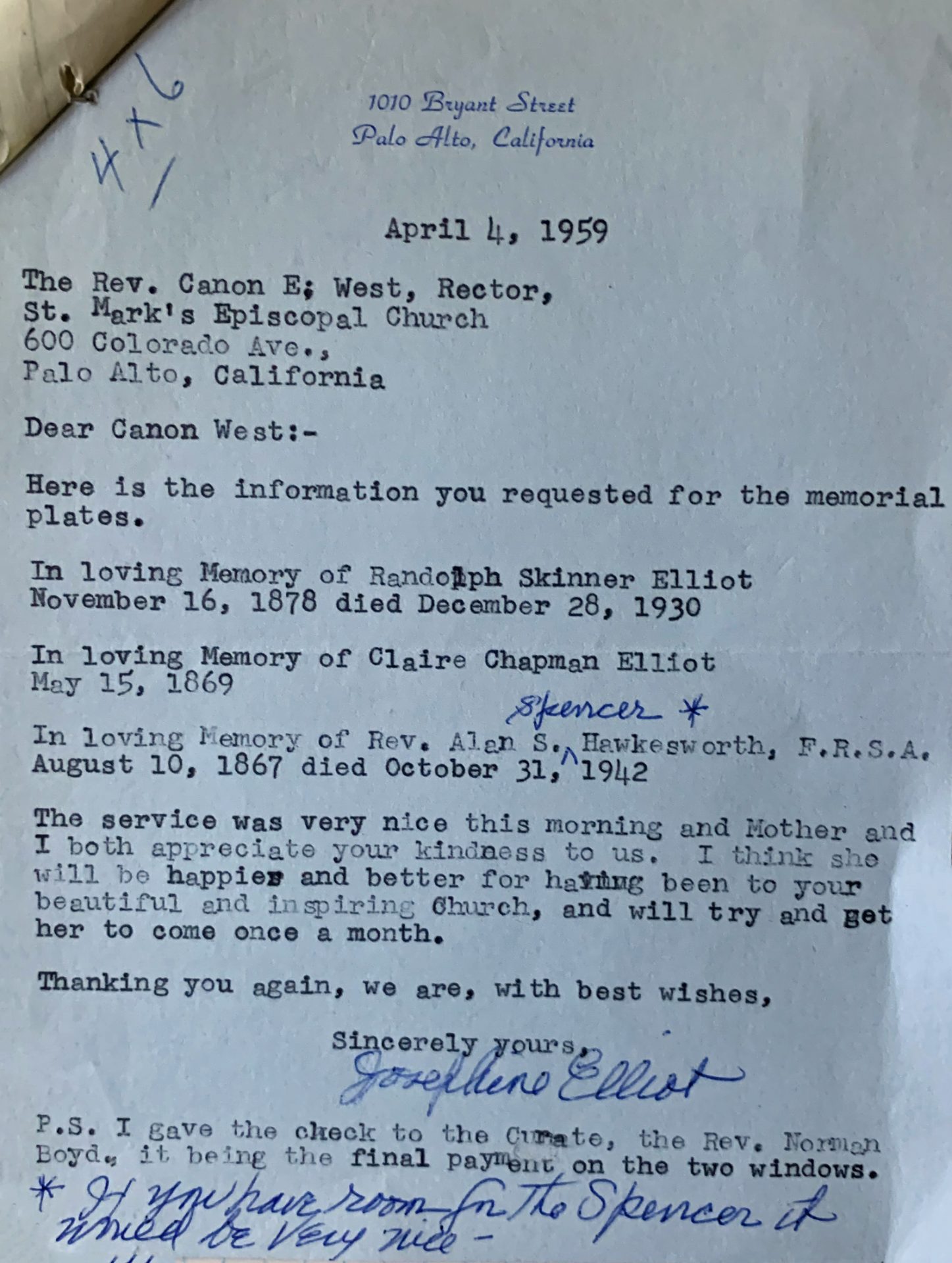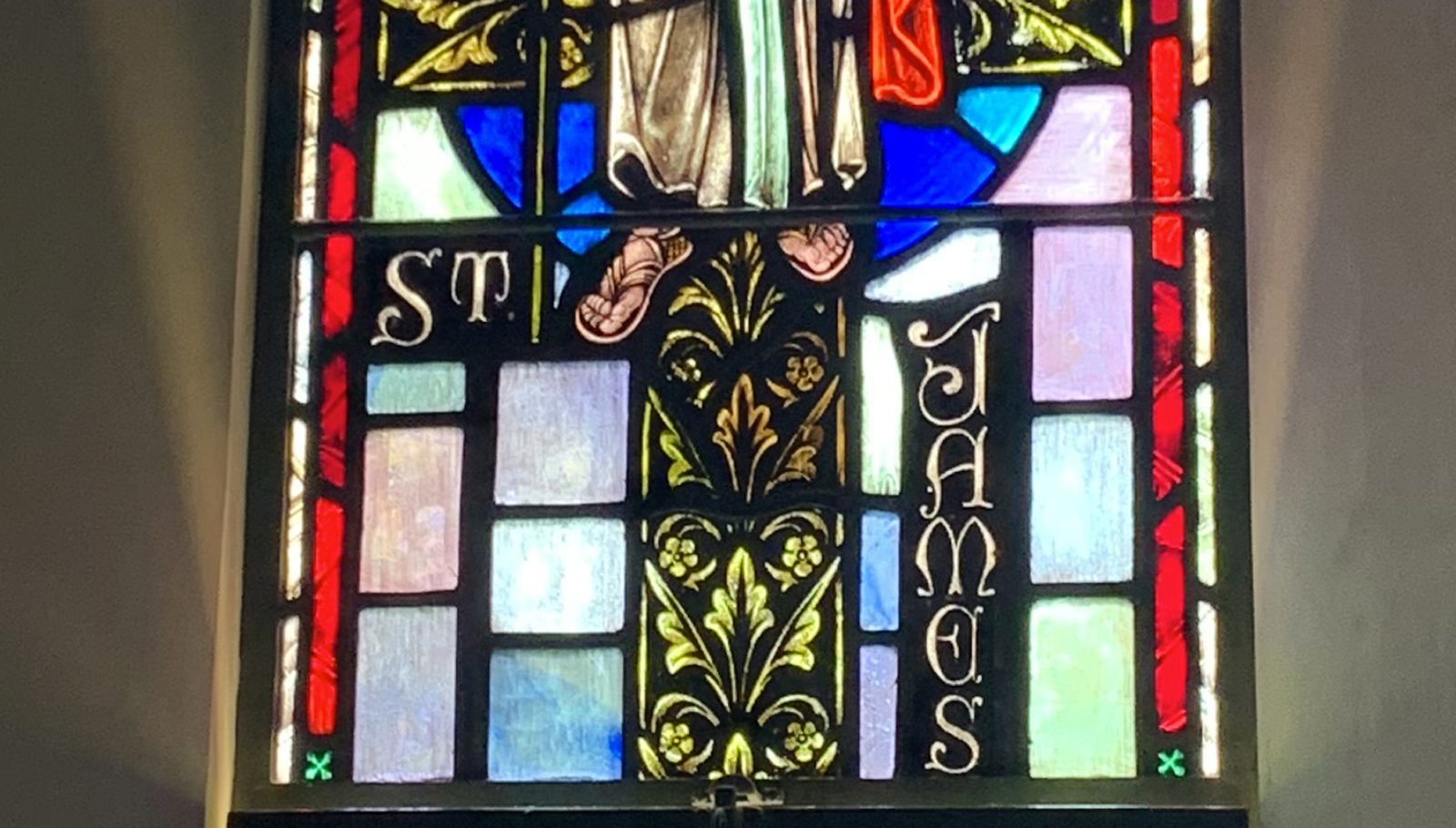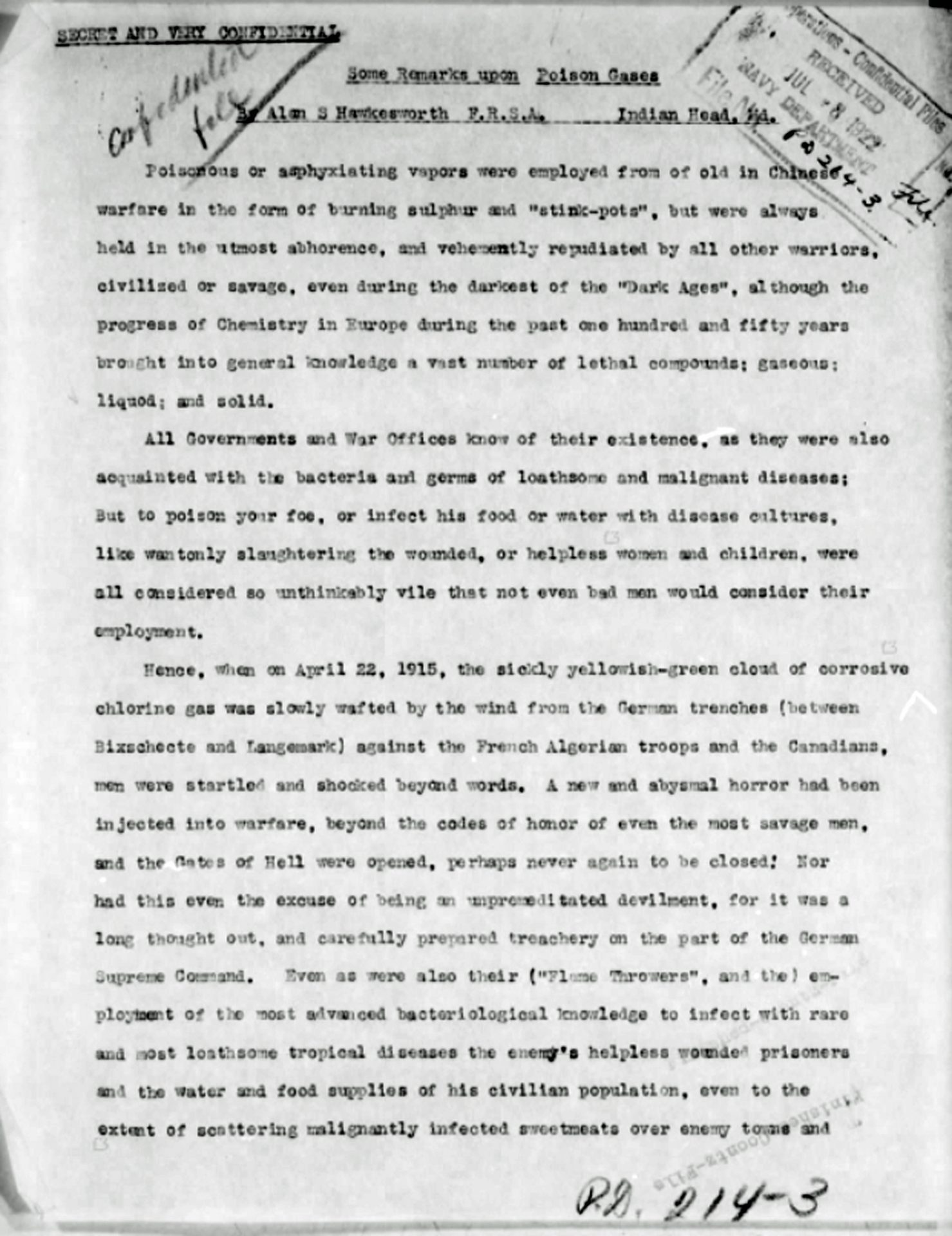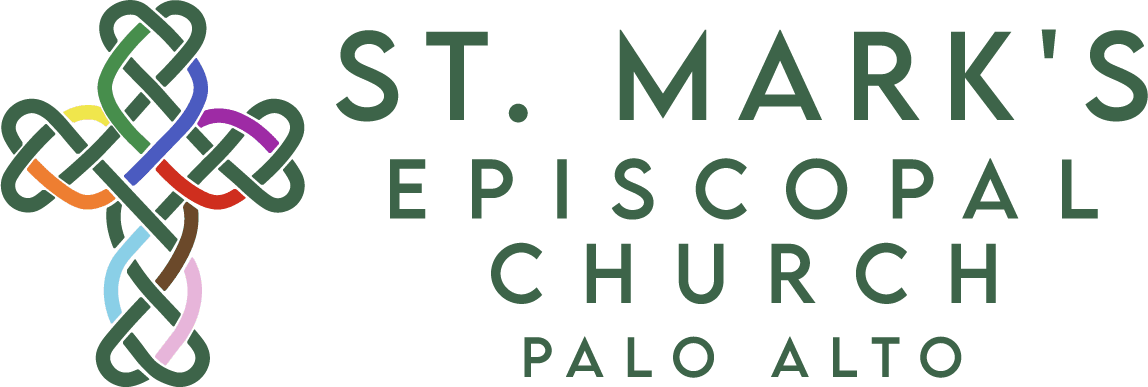The St. James Window is located on the Epistle side aisle at St. Mark’s.
The window was given in memory of Randolph Skinner Elliot, Claire Chapman Elliot, and Rev. Alan S. Hawkesworth.
The St. James window was designed by Cummings Glass Studio, San Francisco and cost $1,046. It is 27″ x 92″
Last week we wrote about the St. James window and two of the three people who the window was given in memory of – Randolph and Claire Chapman Elliot. But there’s a third name on the plaque – Rev. Alan Spencer Hawkesworth.
Rev. Hawkesworth’s life is pretty well documented, but how he was connected to the Elliot family is not. The only thing we know is what’s in a letter from our files. It confirms that the window was given by Josephine Elliot, the daughter of Randolph and Claire. It also confirms that Josephine Elliot gave the window in loving memory of Rev. Hawkesworth…but that’s it.

Alan Spencer Hawkesworth was born in New Orleans, Louisiana in August of 1867. He was the oldest child and only son of William and Gertrude Victor Hawkesworth. When Alan was four, the family moved to London where his father (who was born in Ireland) worked as a Civil Engineer. Alan grew up in the UK and attended the Church Missionary College in London (PraBook).
Alan went to San Antonio, Texas in 1891 and was ordained an Episcopal Deacon in 1892. From 1892-1893 he was in Buenos Aires, Brazil and was ordained to the Priesthood in 1894. From 1893-1897 he was the English Chaplain in Sao Paulo and Santos, Brazil. He was the Rector of Georgetown, St. Vincent, British West Indies In 1897. His clergy profiles all indicate he traveled widely around the world and “saw four revolutions in South America and heavy fighting on the Spanish Main and the China Seas.” (Clerical Directory). Alas, there are no details of these adventures written down.
From 1895-1899 Alan was the Curate of a small Episcopal Church in Castleton-on-Hudson, New York. From 1905-1917 he was the Rector of Episcopal Church of the Messiah, Pittsburgh (Clerical Directory).
This all sounds like a very typical clergy career (other than the fighting in the China Seas), but Rev. Hawkesworth was not at all typical. He was a true polymath, with a vast array of knowledge in many different subjects. In 1936, Time Magazine wrote:
“During his 69 years on this planet, Alan Spencer Hawkesworth of Washington, D. C., by profession a Protestant Episcopal clergyman, has served as mathematician in the Navy Department’s Bureau of Ordnance, has lectured on philosophy, discovered some 100 new theorems in geometrical conies, become a cuneiform expert, passed through four South American revolutions and has seen ”heavy fighting in the West Indies and China Seas.” (Time Magazine)

Here are a few of the highlights of Rev. Hawkesworth’s “other” careers as a scholar and scientist:
A mathematical genius, Hawkesworth published over 120 new theorems in Conics in mathematical journals in the United States and Italy, was a member of the American Mathematical Society and a Fellow in Perpetuity of the Circolo Matematico di Palermo in Italy. While serving as Rector in Pittsburgh, he was also a Professor in Higher Mathematics at the University of Pittsburgh.
In 1907, it was noted that Rev. Hawkesworth:
“…recognized as one of the greatest mathematicians in the world will be among forty persons who will be entertained by the King of Italy during the fourth meeting of the International Congress of Mathematicians to be held at Rome.” (The Living Church)
A member of the Washington Society of Engineers, Rev. Hawksworth was listed as an Ordinance Engineer. He left Pittsburgh in 1917 and went to Washington D.C. to serve as a mathematician on the staff of Admiral Earle (Chief of Naval Ordinance), and served from 1917-1922 (mainly during World War I) (Stowe’s Clerical Directory)
Hawkesworth also wrote many scholarly articles and books – in addition to countless published reviews of other scholars’ articles and papers . You can find them online in places like Google Books and the Internet Archive, but here’s just a sampling of some of his publications:
- On the Identity of Hebrew and Aryan Roots” (1895)
- On the Eucharistic Sacrifice and the Christian Priesthood (1896)
- On Free Will (1896)
- De Incarnatione Derbi Dei: Together With Three Essays (1897)
- The Non-Existence of Matter (1902)
- A New Theorem in the Geometry of Conics (1910)
- On Certain Space Generalizations (1911)
- Stellar Distances and the Expanding Universe (1936)
- And many, many, many mathematical articles

Rev. Hawkesworth also composed a Christmas Carol in Mediaeval English (1918) and patented a process for the manufacture of Nitrocellulose Smokeless Powder (1928) (Official Gazette of the United States Patent Office). Oh and in his spare time he was apparently a stamp collector and wrote articles for stamp collecting journals (Boston Stamp Book).
After World War I ended, Alan Hawkesworth continued to live in Washington DC for the rest of his life. During this time he doesn’t seem to have been active as a priest, but rather devoted his time to his studies. For example, in 1922 he wrote a top secret, highly confidential memo for the military entitled “Some Remarks Upon Poison Gases” (Fold3). in 1927, he was lauded for the discovery of a new formula he developed to better aid shipwreckead seaman to locate their position using a sextant (Kenosha News). He also lectured widely on his travels, including talks on life in Japan and Barbados and St. Vincent.

In addition to those already mentioned, he was also an active member of many different professional societies – Fellow of the American Association of the Advancement of Science, Royal Society of Arts (Great Britain), American Mathmatical Society, and more.
Hawkesworth traveled to Santa Clara County, California at least once because he there died there on Halloween Day in 1942! Was he staying with the Elliot’s? We don’t know…all we do know is that about 25 years after the death of this fascinating man, the Elliot family loved and missed him enough to honor him with a stained glass window at St. Mark’s. Since Rev. Hawkesworth never married, and neither did either of the Elliot children, we’ll probably never know the answer, but clearly he was an important person in their lives.
And if anyone can find a picture of Alan S. Hawkesworth, I will take you out to lunch!
